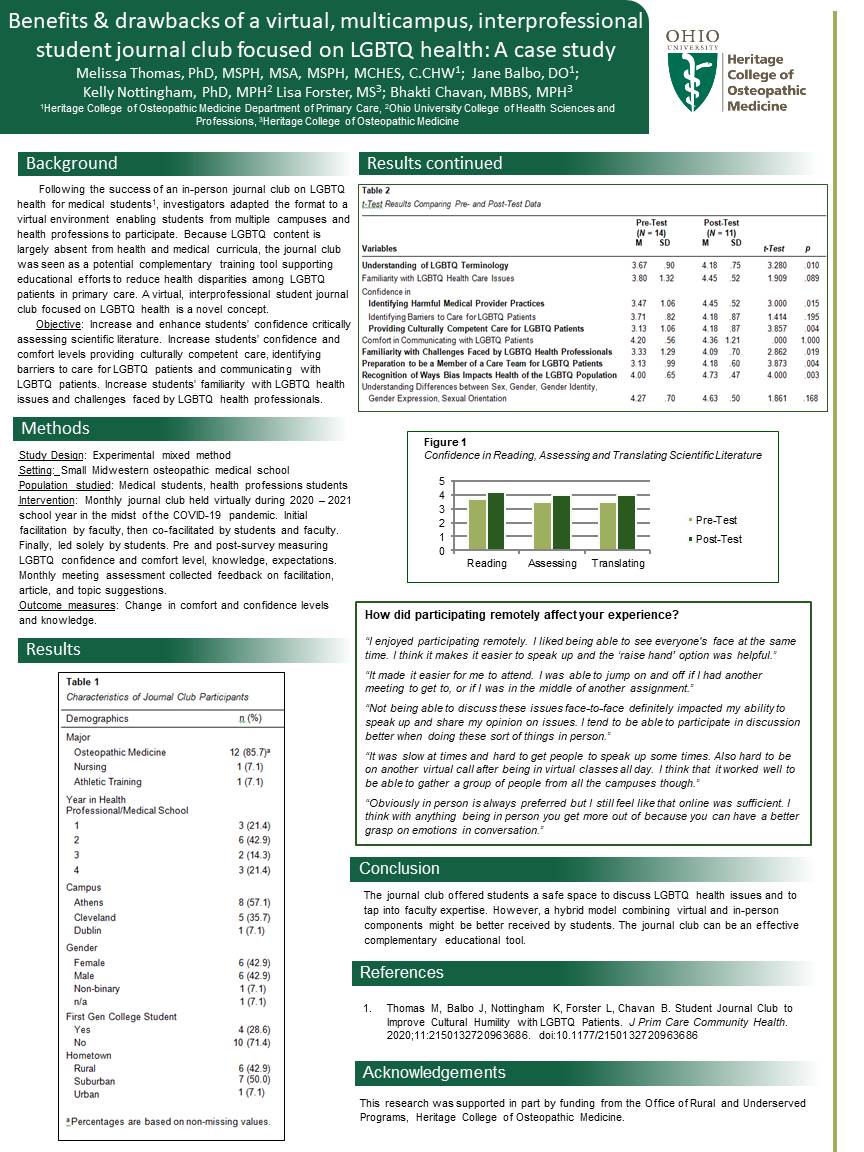PCR013: Benefits & drawbacks of a virtual, multicampus, interprofessional student journal club focused on LGBTQ health: a case study
Lisa Forster, MS; Kelly Nottingham, PhD, MPH; Melissa Thomas, PhD, MSPH, MSA, MSPH, MCHES, C.CHW; Jane Balbo, DO; Bhakti Chavan, MBBS, MPH

Jack Westfall
jwestfall@aafp.org 11/19/2021excellent research. Great poster and abstract. Thanks